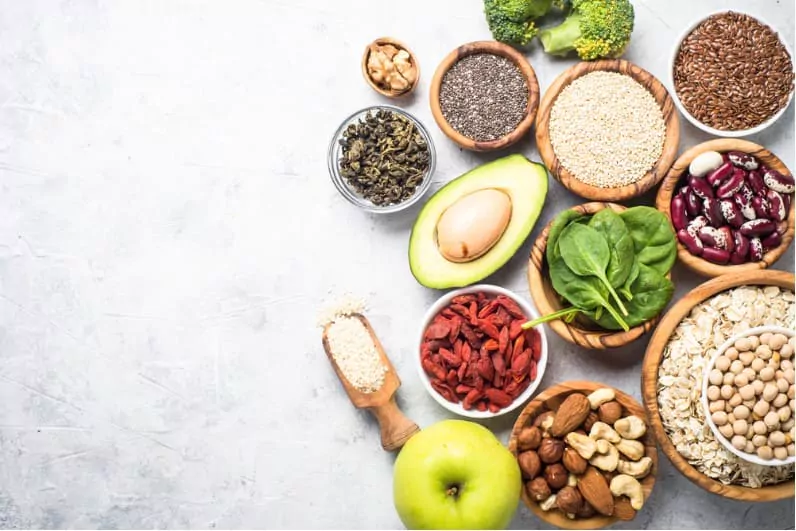Learn How to Increase Platelets in Dengue

Are you or a loved one grappling with dengue fever? Have you been wondering how to increase platelets in dengue, a crucial factor for recovery? This comprehensive guide offers a deep dive into what dengue is, the importance of platelets, and numerous practical strategies on how to increase platelets in dengue.
Dengue, a mosquito-borne viral illness prevalent in tropical and subtropical regions, affects millions of people worldwide. One of the significant health concerns that arise with dengue is a drop in the blood platelet count, causing dengue hemorrhagic fever or severe dengue. This makes knowing how to increase platelets in dengue a critical aspect of managing this illness.
1 Understanding Dengue and Its Impact on Platelets

Before we discuss how to increase platelets in dengue, it’s essential to understand what happens in the body during this illness. The dengue virus targets white blood cells, leading to a steep drop in platelet counts. Platelets, or thrombocytes, are small, colourless cell fragments in our blood that form clots and stop or prevent bleeding. In dengue, the severe drop in platelets can lead to complications, making it critical to know how to increase platelets in dengue.
The primary reason for the reduction of platelets in dengue is due to the body’s immune response. The virus triggers an immune response which leads to the destruction of platelets. Further, dengue also impacts the bone marrow – the primary site for platelet production – resulting in lower production of platelets. A normal platelet count ranges from 150,000 to 450,000 platelets per microliter of blood. In dengue patients, this count can drop below 100,000 or even lower, leading to serious health risks.
2 How to Increase Platelets in Dengue?
Medical Interventions
The most crucial step in managing dengue and the consequent drop in platelets is seeking immediate medical attention. The most straightforward answer to how to increase platelets in dengue lies in the care and supervision of healthcare professionals. In severe cases, platelet transfusion may be necessary to prevent life-threatening complications.
Medications are available that can stimulate platelet production in the bone marrow. Doctors might use drugs like eltrombopag (Promacta) or romiplostim (Nplate) in certain cases. However, these should only be used under medical supervision, and self-medication is strongly discouraged.
Hydration

An essential and often underrated component of learning how to increase platelets in dengue is staying well-hydrated. Dengue fever can cause dehydration, which, in turn, can further lower platelet count. Drinking plenty of fluids, particularly water, helps in maintaining the right volume of blood and promotes the production of platelets.
Dietary Strategies

A well-balanced diet plays a vital role in learning how to increase platelets in dengue. Certain foods are known to contribute to platelet production. Including these in your diet can aid in your recovery journey.
Leafy Green Vegetables: Foods rich in vitamin K, such as spinach, kale, and other leafy greens, can help increase platelet count. Vitamin K is essential for proper blood clotting.
Lean Proteins: Protein-rich foods like lean meats, fish, eggs, and dairy products promote cell growth and repair. Amino acids in these foods stimulate the production of platelets.
Folate-Rich Foods: Folate or vitamin B9 is crucial for cell division and growth, including platelets. Foods like oranges, legumes, and fortified cereals can be beneficial.
Vitamin A and C Rich Foods: These vitamins are essential for platelet production. Carrots, pumpkins, and citrus fruits can be a good addition to the diet.
Herbal Remedies
Certain herbs and plants have traditionally been used to increase platelets. However, these should be used as a complement to, and not a substitute for, conventional medical treatments.
Papaya Leaf Extract: Studies suggest that papaya leaf extract may help in increasing the platelet count in people with dengue fever. It’s important to consult your healthcare provider before starting any herbal supplement regimen.
Giloy: Also known as Tinospora cordifolia, Giloy is an Ayurvedic herb that has been traditionally used in India for its immune-boosting properties. Preliminary research suggests that it might have the potential to increase the platelet count.
Wheatgrass: This superfood is known for its high chlorophyll content, which resembles the haemoglobin molecule in humans. It is believed to help increase the blood’s capacity to carry oxygen and stimulate platelet production.
Exercise and Rest

When it comes to understanding how to increase platelets in dengue, rest is crucial. The body requires energy to combat the virus and produce more platelets. Overexertion may lead to a decline in the body’s ability to recover. Light exercises can be beneficial once the acute phase has passed, but always consult your doctor before starting any exercise regimen during recovery.
Avoid Certain Foods and Medications
While it’s essential to know what to consume, understanding what to avoid is equally important when looking at how to increase platelets in dengue. Some foods and medicines can interfere with platelet function or reduce platelet count.
Aspirin and NSAIDs: These medications can impair platelet function and should be avoided unless advised by your healthcare provider.
Alcohol: It can interfere with platelet count and function and should be avoided during the recovery phase.
Certain Foods: Foods such as garlic, onions, and tomatoes are thought to reduce platelet aggregation and should be consumed in moderation.
Probiotics

Recent studies suggest a positive link between gut health and platelet count. A healthy gut can help improve immune response and might stimulate platelet production. Consuming probiotics can help maintain a healthy gut microbiome, and it may indirectly aid in learning how to increase platelets in dengue.
Prevention: The Best Cure

Ultimately, the best way to deal with dengue is to prevent it. Controlling the mosquito population, using insect repellents, and wearing protective clothing can help reduce the risk of infection. Remember, preventing dengue means preventing a low platelet count. Dengue is transmitted by the Aedes mosquito. Here are some steps to reduce the risk:
Eliminate Mosquito Breeding Sites: Aedes mosquitoes breed in stagnant water. Regularly checking and emptying water storage containers can help reduce mosquito populations.
Use Mosquito Repellents: Use mosquito repellents, nets, and screens to avoid mosquito bites.
Wear Protective Clothing: Wear long-sleeved shirts, long pants, socks, and shoes when outdoors, especially during dawn and dusk when Aedes mosquitoes are most active.
3 Wrapping Up
In conclusion, understanding how to increase platelets in dengue involves a multi-faceted approach. Medical intervention is paramount, but lifestyle and dietary adjustments also play an essential role. Remember, each individual is different, and what works for one person may not work for another. Always consult your healthcare provider before making any changes to your treatment plan.
We hope that this detailed guide has given you a better understanding of how to increase platelets in dengue. Our goal is to equip you with the knowledge you need to effectively combat this illness and speed up your recovery. Be proactive about your health, take good care of yourself, and get well soon!
Community Q&A
About This Article
This article has been viewed 433 times.



